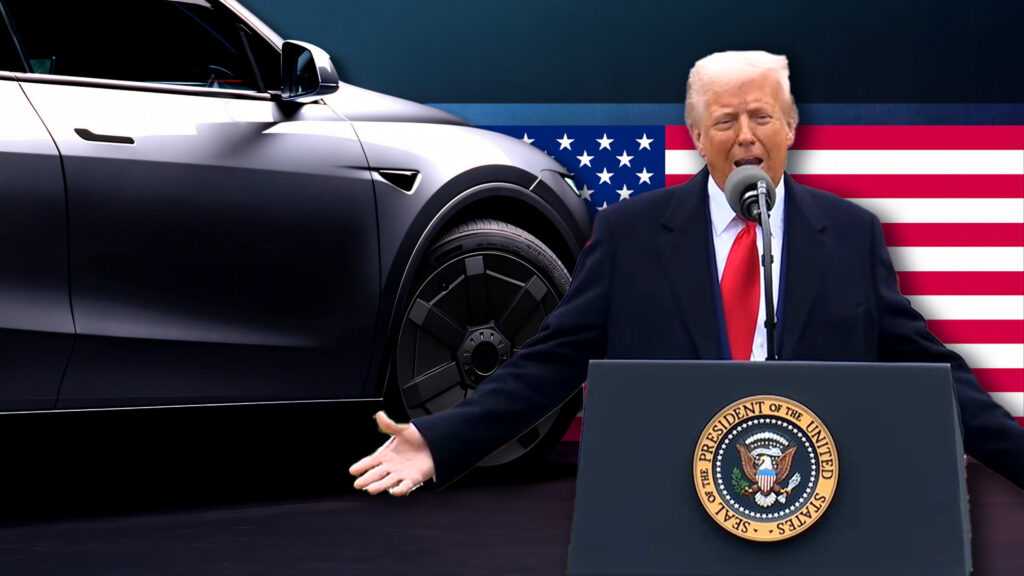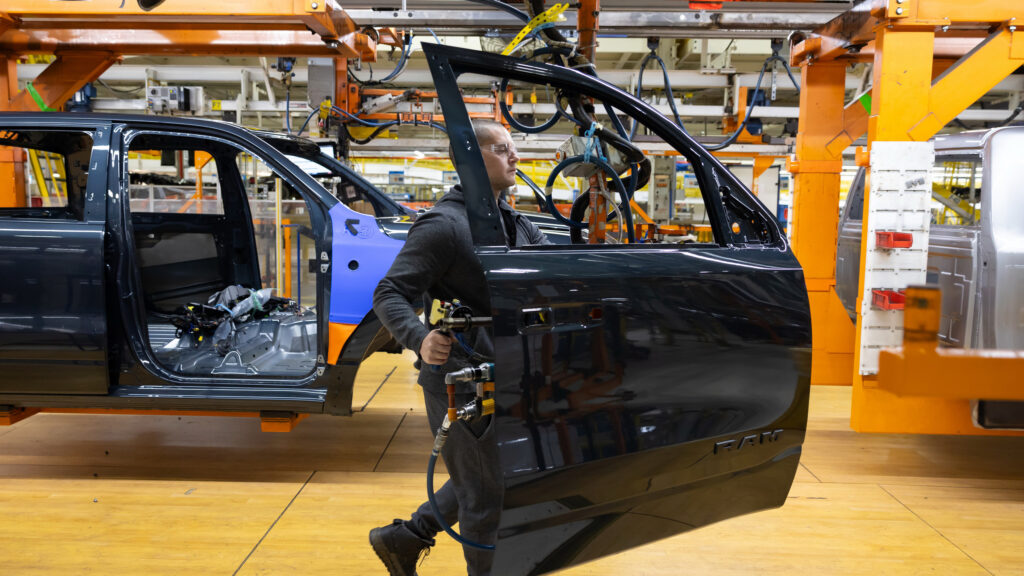
- The Tesla Model 3 Performance has 87.5% domestic content, positioning it above the Model Y.
- Other Tesla models to rank highly on the list include the Cybertruck, Model S, and Model X.
- However, Tesla still uses many Chinese parts for its EVs and could be hit by potential Trump tariffs.
Update: With the Trump administration announcing a series of sweeping “Liberation Day” tariffs that come after the previously announced 25% on foreign-made cars and auto parts, it seems like a good time to revisit the most “American” cars on the market today. Just a quick reminder that when we refer to American-made cars, we mean vehicles with parts from both the USA and Canada, since the American Automobile Labeling Act doesn’t separate between the two.
var adpushup = window.adpushup = window.adpushup || {que:[]};
adpushup.que.push(function() {
if (adpushup.config.platform !== “DESKTOP”){
adpushup.triggerAd(“0f7e3106-c4d6-4db4-8135-c508879a76f8”);
} else {
adpushup.triggerAd(“82503191-e1d1-435a-874f-9c78a2a54a2f”);
}
});
See: The Foreign Parts Inside Every New Car Sold In The USA
Starting April 2, a 25% tariff will hit all foreign cars entering the U.S. And if that wasn’t enough, the White House confirmed in a fact sheet on its website that auto parts like engines and transmissions will also be subject to the same 25% tariff, even if those parts are used in vehicles assembled here in the States by May 3. Needless to say, automakers are now staring down a serious logistical headache, as production lines built around global sourcing are thrown into uncertainty.

To make things even more complicated, Trump also announced a set of sweeping “reciprocal tariffs” on global imports. These range from 10% to 50%, depending on the country, including a 34% tariff on Chinese goods, 20% on imports from the European Union and 24% from Japan. On top of that, there’s a new 10% baseline tariff on all U.S. imports from any country, regardless of origin.
No Reciprocal Tariffs for Autos
While it was initially unclear whether the overlapping tariffs would be applied cumulatively, as is the case with most products, the White House clarified that automobiles and auto parts already subject to the existing 25% tariff will not face the additional reciprocal tariffs announced on Tuesday.
More: Trump Imposes 25% Tariff On All Non-US Made Cars And Parts
Still, prices for foreign-made cars are likely to rise sharply, and automakers probably won’t be able to absorb the added costs, meaning consumers will be left to foot the bill.
var adpushup = window.adpushup = window.adpushup || {que:[]};
adpushup.que.push(function() {
if (adpushup.config.platform !== “DESKTOP”){
adpushup.triggerAd(“bb7964e9-07de-4b06-a83e-ead35079d53c”);
} else {
adpushup.triggerAd(“9b1169d9-7a89-4971-a77f-1397f7588751”);
}
});
There is, however, some temporary breathing room—at least on paper. Automakers importing vehicles under the United States-Mexico-Canada Agreement (USMCA) will get some temporary relief, but only until the Commerce Department figures out exactly how to implement the new rules. For now, USMCA-compliant auto parts remain tariff-free. That said, it’s anyone’s guess how long that will last, as regulators work out how to define and tax non-U.S. content. (by John Halas).
Original story follows below

You’d think if anyone were building the most American cars, it’d be the all-stars of apple pie and bald eagles—Ford and GM. But nope, they’ve been outdone. The real MVP of red, white, and blue automotive pride is, of all companies, Tesla. Yes, the same tech bro–magnet that brought you memes, stock market drama, and cars with questionable panel gaps is also the most “Made in the USA” brand by a considerable margin.
This isn’t the first time we’ve learned just how American-made Tesla’s ever-popular EVs are. Back in June, the Tesla Model 3 topped a list produced by Cars.com. This latest ranking comes from the Kogod School of Business at American University and identifies the 25 cars built in the US that incorporate the most American-made content.
var adpushup = window.adpushup = window.adpushup || {que:[]};
adpushup.que.push(function() {
if (adpushup.config.platform !== “DESKTOP”){
adpushup.triggerAd(“b25ecba7-3bbb-4ea7-a3a8-dbea91695c07”);
} else {
adpushup.triggerAd(“e46c436a-adeb-4b5e-a2c7-56bc36561c10”);
}
});
Importantly, the analysis considers parts originating in the US and Canada as both domestic content. This is because the American Automobile Labeling Act requires carmakers to report the percentage of American and Canadian parts without distinguishing between the two.
The Top Performers
Claiming the top spot was the Tesla Model 3 Performance, with 87.5% of its parts coming from domestic suppliers. It was followed closely by the Tesla Model Y Long Range and the base Model Y, which tied for second place with 85% domestic content. The Tesla Cybertruck came in third at 82.5%, ahead of the Tesla Model S and Model X, which tied at 80%. The Detroit, Michigan-built Ford Mustang GT and Ford Mustang GT Premium also tied with the Model S and Model X at 80%.
More: The Top 10 Most American Made Cars May Surprise You
Falling behind Tesla and Ford but still in the top-tier league are two Hondas, the Passport AWD and Passport Trailsport, which are ranked fifth, at 76.5% domestic content. Jeep tries to wave its Wrangler Rubicon and Sahara in patriotic defiance at 76%, while Volkswagen sneaks in with the ID.4 AWD at 75.5%, along with the GMC Canyon AT4 Crew Cab (75.5%) and three Chevrolet Colorado models at 75.5%.
Tesla’s Made-in-America Claim Comes With a Catch

For all Tesla’s chest-thumping, there’s a wrinkle. According to Frank DuBois, the author of the study, Tesla’s domestic dominance isn’t airtight. He told KBB that Tesla still relies on a decent chunk of Chinese parts, especially motors and batteries, and could be impacted by new tariff policies introduced by the next Trump administration.
He pointed out that if you exclude the motors and batteries of the second-place Model 3 Long Range, it “has 40% Chinese content.” Similarly, the Cybertruck has 20%, with Chinese parts typically found in “seats, dashboard components, and so on,” he explains.
“Automotive executives like to see stability in trade relationships with our major trade partners,” DuBois added. But with Trump’s tariff threats and potential retaliation, “We’re going to see a period of real instability,” he says.
MOST AMERICAN-MADE VEHICLES
SWIPE